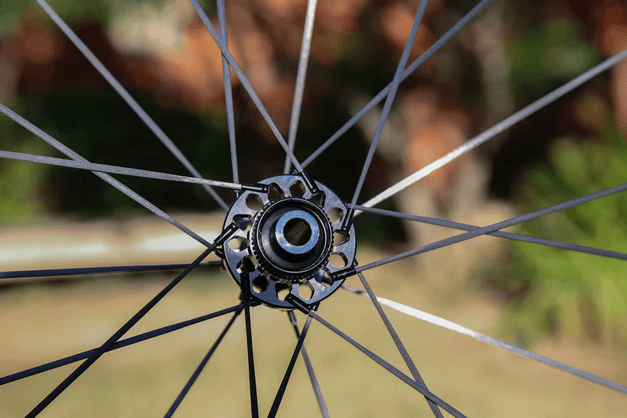When cyclists discuss wheel performance, they often focus on rim depth, spoke count, or carbon construction. However, hub flange width plays a critical role in determining a wheel’s lateral stiffness and stability.
What is Hub Flange Width?

The hub flange is the part of the hub where the spokes attach. The flange width refers to the distance between the left and right flanges. This width affects the bracing angle of the spokes, which in turn dictates how stiff and stable the wheel is under lateral loads.
Wide Flange vs. Narrow Flange
Wide Flange
Creates a larger spoke bracing angle, increasing lateral stiffness.
Improves stability during sprints, cornering, and out-of-saddle climbing.
Favored by riders who prioritize precision handling and rigidity.
Narrow Flange
Smaller spoke bracing angle, resulting in slightly less lateral stiffness.
Can reduce weight and sometimes provide more vertical compliance, improving comfort.
Often seen in ultra-light climbing wheelsets.
The Balance in Modern Design

Modern carbon wheelset designers aim to balance lateral stiffness, weight, and comfort. While wider flanges increase stiffness, they can introduce challenges:
Reduced clearance with the drivetrain (especially on the rear hub).
More complex spoke tensioning during wheel building.
Thus, optimal flange width usually strikes a balance—providing enough stiffness for stability without compromising drivetrain compatibility or adding unnecessary weight.
What Do Riders Feel?

In sprints or high-power efforts, a wider flange provides quicker response and prevents the wheel from feeling “soft.”
On long-distance or rough road rides, narrower flanges may feel smoother and more forgiving.
Conclusion: Hub flange width is a subtle but significant factor in lateral stiffness. Riders who seek explosive power transfer and sharp handling benefit from wider flanges, while climbers and endurance riders may appreciate the compliance and weight savings of narrower designs.




Laisser un commentaire
Tous les commentaires sont modérés avant d'être publiés.
Ce site est protégé par hCaptcha, et la Politique de confidentialité et les Conditions de service de hCaptcha s’appliquent.